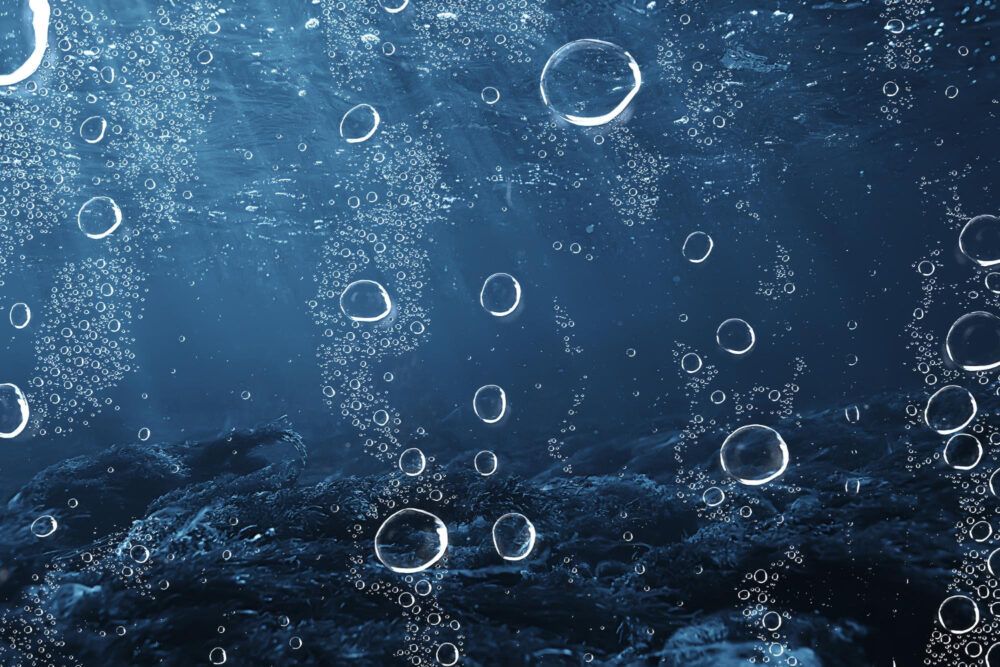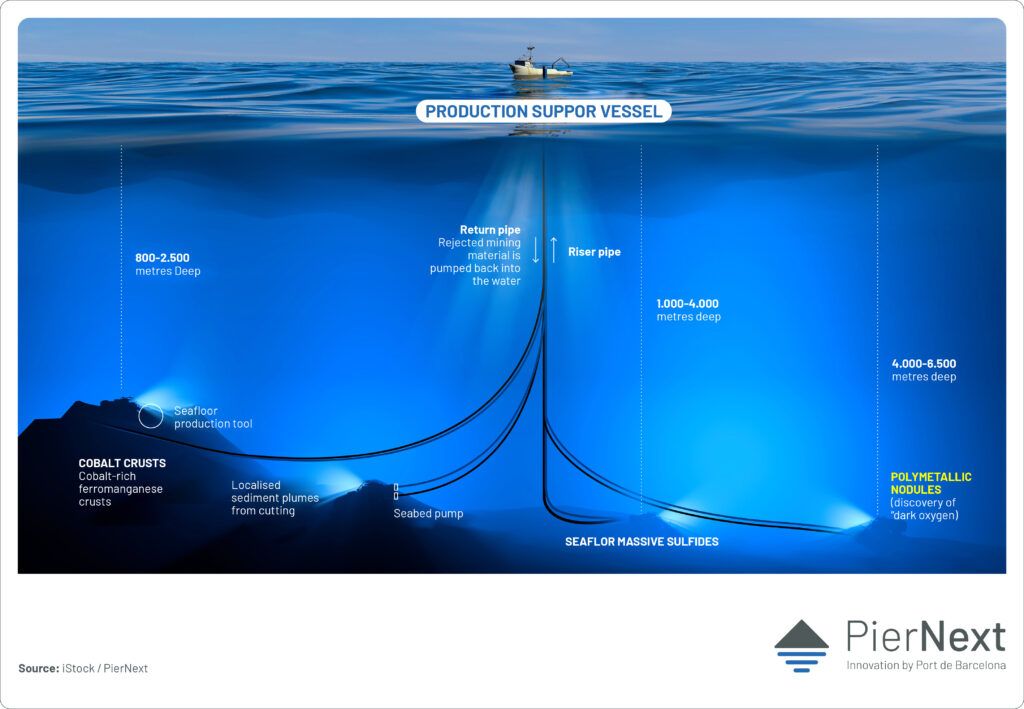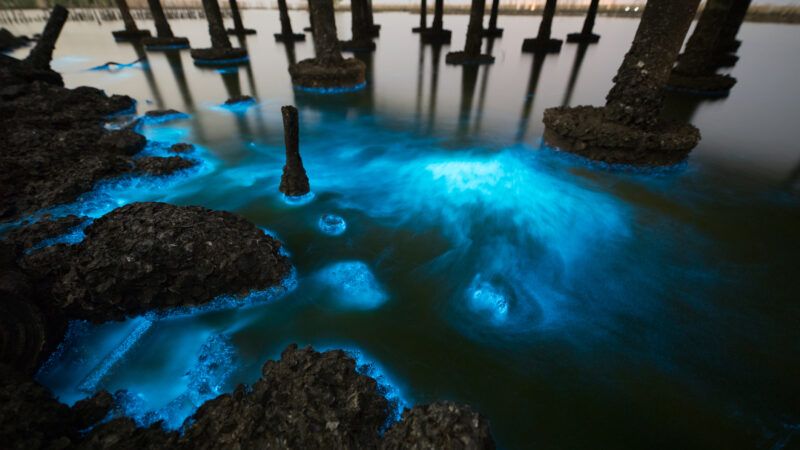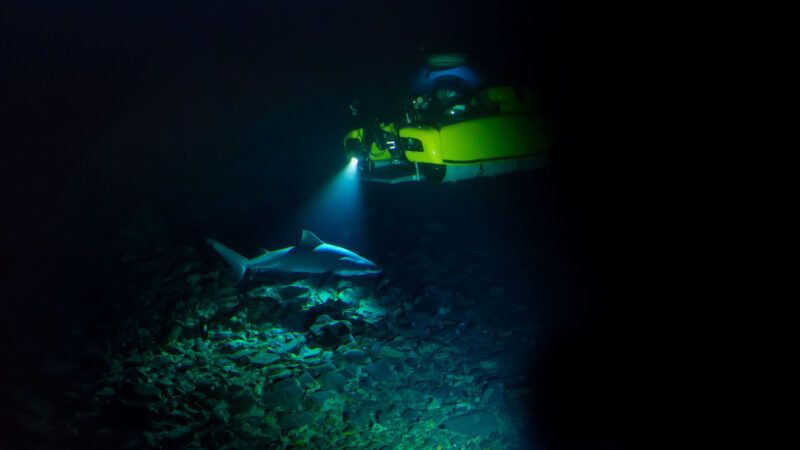
Can the ocean floor produce its own oxygen?
A discovery that questions what was known until now about the presence of oxygen in the ocean, about the beginning of life on Earth and about the implications that deep sea mining could have for the entire planet. A process associated with polymetallic nodules present in the abyssal depths can generate oxygen without the intervention of photosynthetic organisms. In complete darkness. We tried to understand this by talking to one of the researchers responsible for the investigation.

Materials for the energy transition... or to create oxygen?
For years now, mining companies have been interested in the depths of the ocean, where large quantities of metals and minerals such as iron, manganese, cobalt and nickel have been accumulating , which could be used to manufacture technologies such as batteries or solar panels to drive the energy transition.
How to extract these materials?
- Commercial deep sea mining activities would be necessary. But scientists warn: not enough is known about the ocean floor to ensure that these activities would be harmless to the environment.
Who decides on how to access these materials?
- The International Seabed Authority (ISA) is the entity in charge of approving or not deep sea mining licenses. To better understand the possible consequences of this activity, this organization has been studying the ocean floor for years.
And what has happened now to call everything into question?
- It was precisely during one of these investigations, in the Clarion-Clipperton area (located between Mexico and Hawaii and more than 4,000 meters below the surface of the sea), that a discovery was made that could determine the future of deep sea mining.
- A team of scientists observed that metal clusters cause a process similar to electrolysis: they produce enough voltage to split water into oxygen and hydrogen. The resulting oxygen is known as dark oxygen, because it is produced in media where light does not penetrate and photosynthesis cannot occur.
This video captures the first test of the integrated nodule collection system conducted at the Clarion Clipperton site by a mining company. An initial batch of nodules were collected from the seafloor and transported to the surface via a 4 km long riser system.
Dark oxygen at 4,000 meters depth
- To date, the most widespread scientific opinion has been that oxygen is carried by currents from surface waters (where photosynthesis does occur) to deeper waters.
- This is the first time that it seems to have been demonstrated that oxygen can also be produced in the depths, where light does not reach.
- Although the presence of oxygen on our planet seems commonplace, it has not always been there. In fact, Earth is the only known planet that has enough oxygen to support life as we understand it today, and scientists believe that this oxygen appeared in our world about 2.4 billion years ago in a change known as the Great Oxidation and reached concentrations in the atmosphere similar to those of today.
- The origin of oxygen is cyanobacteria, primitive life forms, which can still be found in seas and lakes, that use solar energy to carry out oxygenic photosynthesis, in which water combines with CO2 to form sugars and oxygen is released as a by-product. This is how it was believed, until now, that all the oxygen on the planet was formed.

A unique discovery, explained by one of the researchers
The process to prove that polymetallic nodules in the deep abyssal depths can generate dark oxygen began years ago:
- The researchers observed that, in an enclosed area, oxygen levels were increasing, rather than decreasing, and that they did not follow gradual patterns. They were so surprised that they suspected that their instruments were failing and decided to replace them.
- But over the years, using different tools, the results were similar: somehow, oxygen was being produced at depth.
“Oxygen production in the deep sea seemed impossible until we started observing it”, says in conversation with PierNext Daniëlle de Jonge, researcher at the Scottish Association for Marine Science and member of the team that conducted the study.
"This discovery was shocking because the general consensus is that oxygen is produced in surface waters through photosynthesis and reaches the seafloor, where deep-sea organisms use it for respiration. Therefore, whenever we look at oxygen fluxes in sediments, we expect to see a decrease," explains de Jonge.
The team conducted different experiments in the lab and recorded readings of up to 0.95 volts on the surfaces of some nodules, which means that significant voltages can be generated when they are clustered together.
The findings of their study were gathered in the study 'Evidence of dark oxygen production at the abyssal seafloor', published in July 2024 in Nature.
Natural geobatteries?
“At the moment,” explains de Jonge, “we don't know how oxygen is produced, but in the paper we have developed a theory based on data.”
- “We believe that the modules can function as natural ‘geobatteries’, which generate a voltage potential and can release electricity under certain circumstances”.
- "If the electric current is large enough (e.g., when several nodules follow each other), it can split water into hydrogen and oxygen. Several laboratory experiments support this hypothesis, but much work remains to be done to understand the process. We do not completely rule out that microbes may play a role, for example".
According to the Scottish Association for Marine Science researcher, at the moment there is not enough information to determine the importance of this dark oxygen production process. However, de Jonge adds, since oxygen is of such importance to life, this is an important area that requires further research to see to what extent ocean organisms may depend on this process.
THE RESOURCES SOUGHT BY DEEP SEA MINING

DEEP SEA MINING REFUTES THE DISCOVERY
One of the areas in which the results of this research may have the most implications in the short term, as it turns out, is that of deep sea mining. In fact, the paper is part of a much larger body of scientific work being carried out to better understand the ecosystems in which this activity is being studied.
- “Hopefully, officials and policy advisors will take scientific evidence into account when writing their policies,” says de Jonge, who adds that “an important point is that, despite the large amount of research being done, we do not fully understand ecosystem processes and it is still possible to find novel and important processes previously unknown.”
The Deep Sea Conservation Coalition (DSCC), an entity formed by 115 organizations working to protect the oceans, sees this discovery as a compelling reason to apply a moratorium on the approval of commercial underwater mining licenses.
- “This research emphasizes how much we have yet to discover and learn about the deep sea and raises more questions about how deep sea mining could affect life,” says Sofia Tsenikli, leader of the DSCC's global campaign against deep sea mining.
Some of the major deep sea mining companies, however, disagrees with the “dark oxygen” study has recently strongly contested it , claiming that the research does not meet scientific standards.
The tension between access to natural resources and their protection is always present in scientific advances, also in this case.
As the research progresses, another of the great unknowns raised by this discovery arises, which has less to do with underwater mining and seabed protection than with how much we know (and when we do not know) about the presence of oxygen in the depths and, therefore, about the origin of life on Earth and even on other planets.
The seafloor remains a mystery.





